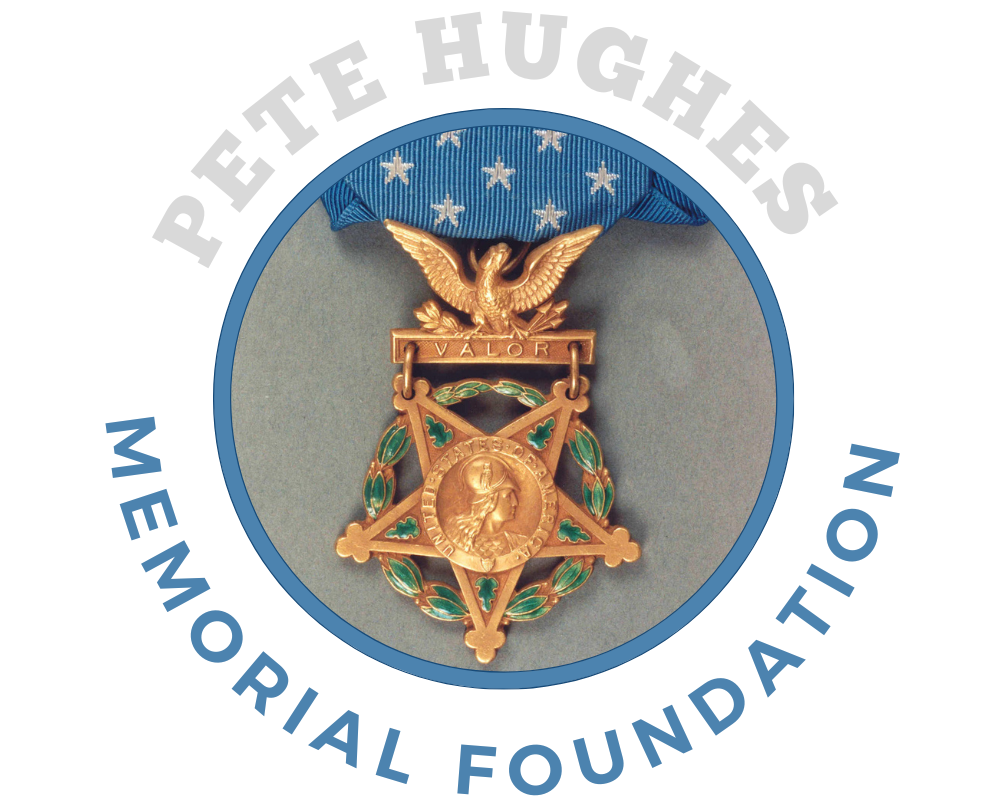The Machine
B-24 Liberator
The B-24 Liberator was a four-engine World War II heavy bomber designed by Consolidated Aircraft in San Diego, California. More B-24s were built than any other heavy bomber or multi-engine bombers during World War II. Despite over 18,000 B-24s being built, only two aircraft survive today as airworthy and in flying condition.
The B-24 had a very distinctive appearance, with four engines mounted on a long, slender high wing over a bulky fuselage and trailed by a top-mounted elevator with vertical fins on each end. The B-24 had quirky handling characteristics when flown at the slow end of its flight envelope. It also had a reputation for being difficult to manage in formation flights. It was also prone to leaking fuel, and crews would often fly the B-24s with bomb bay doors partially open to prevent the accumulation of fuel vapors and to reduce the risk of a fire.
Pete Hughes and his crew were assigned to a B-24D, serial number 42-40753. The B-24D was the first production model to achieve Consolidated’s goals for its heavy bomber. According to production records, aircraft 42-40753 was painted to US Army Air Forces specifications and insignia. The abbreviated serial number 40753 was painted on the aircraft’s aft vertical fins above a large radio code letter “J.” This number can be seen in photographs taken by Romanians after the aircraft crashed in the bed of the Prohava River south of Campina.
Support the Pete Hughes Memorial Foundation
The Pete Hughes Memorial Foundation is committed to building a memorial befitting a Medal of Honor recipient and his sacrifice that exemplifies Hughes’ valor and the tenacity and integrity of Refugio High School graduates. Will you help?
Donate Now“Ole Kickapoo”
The naming of aircraft by World War II aircrews was common and creative. The name was frequently accompanied by nose art. This was not so with the B-24 flown by Pete Hughes. There was no nose art or name documented on aircraft 42-40753.
In their book, “The Sky Scorpions: The Story of the 389th Bomb Group in World War II”, Paul Wilson and Ron Mackay refer to the name of aircraft 42-40753 as “Eager Eagle.” There is no citation or reference given for this name. Col. Woodall’s well-documented chapter on Pete Hughes in “Texas Aggie Medals of Honor” provides a more credible account in a letter written by co-pilot 2nd Lt. Ronald L. Helder to his parents the day before the mission, in which Helder describes the last-minute naming of aircraft 42-40753:
We finally named our plane “Ole Kickapoo” because we couldn’t agree on a name for it. We have four bombs painted on it to signify raids and four swastikas to designate fighters shot down. Our crew is classified in the best three of our squadron—pretty nifty.
– 2nd Lt. Ronald L. Helder
In combat operations, a B-24D Liberator required ten crew members. In addition to the pilot, 2nd Lt. Pete Hughes, and the co-pilot, 2nd Lt. Ron Helder, the remaining eight crew members of “Ole Kickapoo” were:
Navigator
Bombardier
Engineer/Top Turret Gunner
Radio Operator
Waist Gunner
Waist Gunner
Tail Gunner
Tunnel Gunner
2nd Lt Sidney A. Pear
1st Lt John A. McLoughlin
T/Sgt Joseph E. Mix
T/Sgt Louis N. Kase
S/Sgt Malcolm C. Dalton
S/Sgt Edmond H. Smith
S/Sgt Thomas A. Hoff
Sgt Avis K. Wilson





